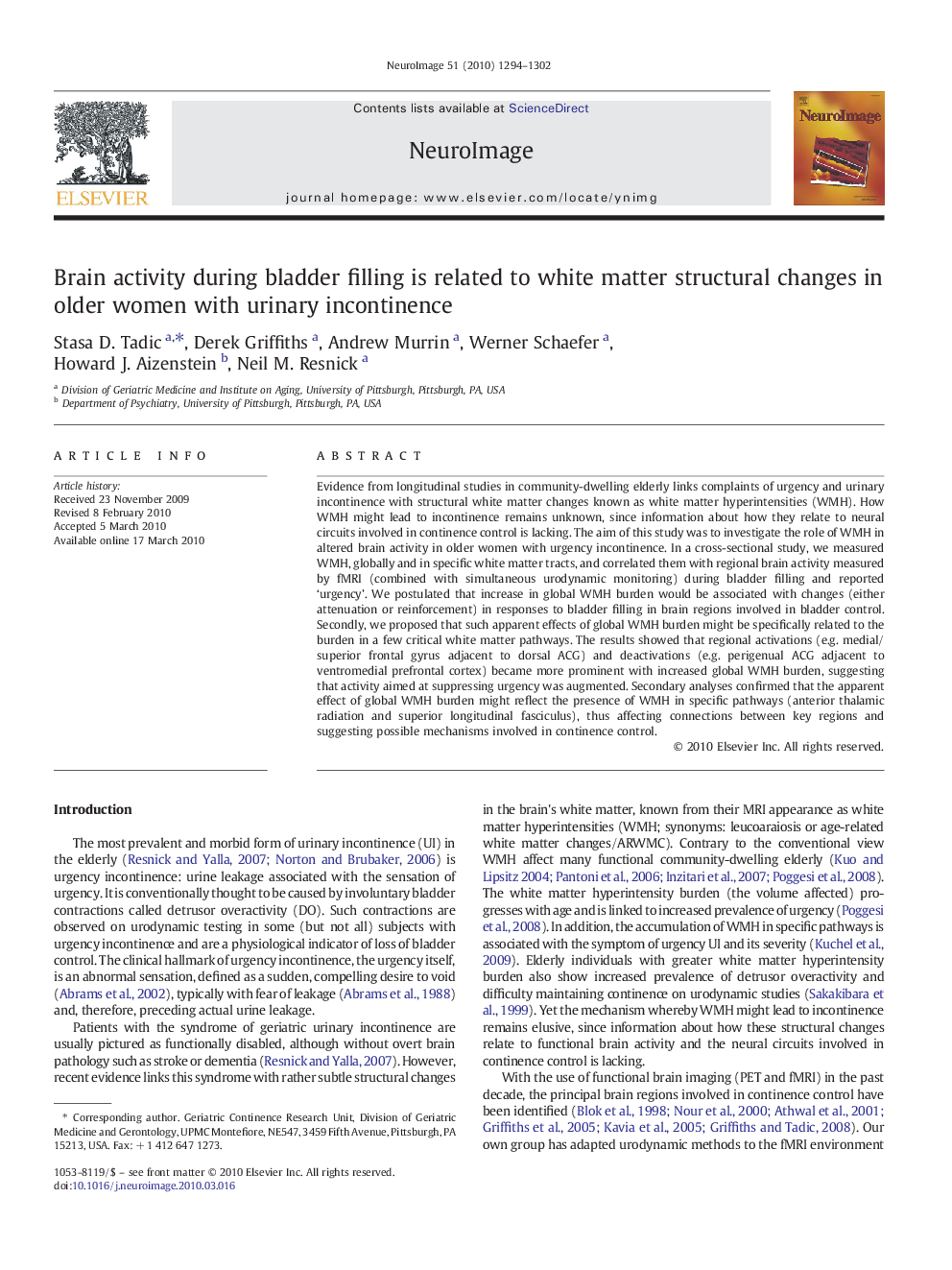| Article ID | Journal | Published Year | Pages | File Type |
|---|---|---|---|---|
| 6035805 | NeuroImage | 2010 | 9 Pages |
Abstract
Evidence from longitudinal studies in community-dwelling elderly links complaints of urgency and urinary incontinence with structural white matter changes known as white matter hyperintensities (WMH). How WMH might lead to incontinence remains unknown, since information about how they relate to neural circuits involved in continence control is lacking. The aim of this study was to investigate the role of WMH in altered brain activity in older women with urgency incontinence. In a cross-sectional study, we measured WMH, globally and in specific white matter tracts, and correlated them with regional brain activity measured by fMRI (combined with simultaneous urodynamic monitoring) during bladder filling and reported 'urgency'. We postulated that increase in global WMH burden would be associated with changes (either attenuation or reinforcement) in responses to bladder filling in brain regions involved in bladder control. Secondly, we proposed that such apparent effects of global WMH burden might be specifically related to the burden in a few critical white matter pathways. The results showed that regional activations (e.g. medial/superior frontal gyrus adjacent to dorsal ACG) and deactivations (e.g. perigenual ACG adjacent to ventromedial prefrontal cortex) became more prominent with increased global WMH burden, suggesting that activity aimed at suppressing urgency was augmented. Secondary analyses confirmed that the apparent effect of global WMH burden might reflect the presence of WMH in specific pathways (anterior thalamic radiation and superior longitudinal fasciculus), thus affecting connections between key regions and suggesting possible mechanisms involved in continence control.
Related Topics
Life Sciences
Neuroscience
Cognitive Neuroscience
Authors
Stasa D. Tadic, Derek Griffiths, Andrew Murrin, Werner Schaefer, Howard J. Aizenstein, Neil M. Resnick,
